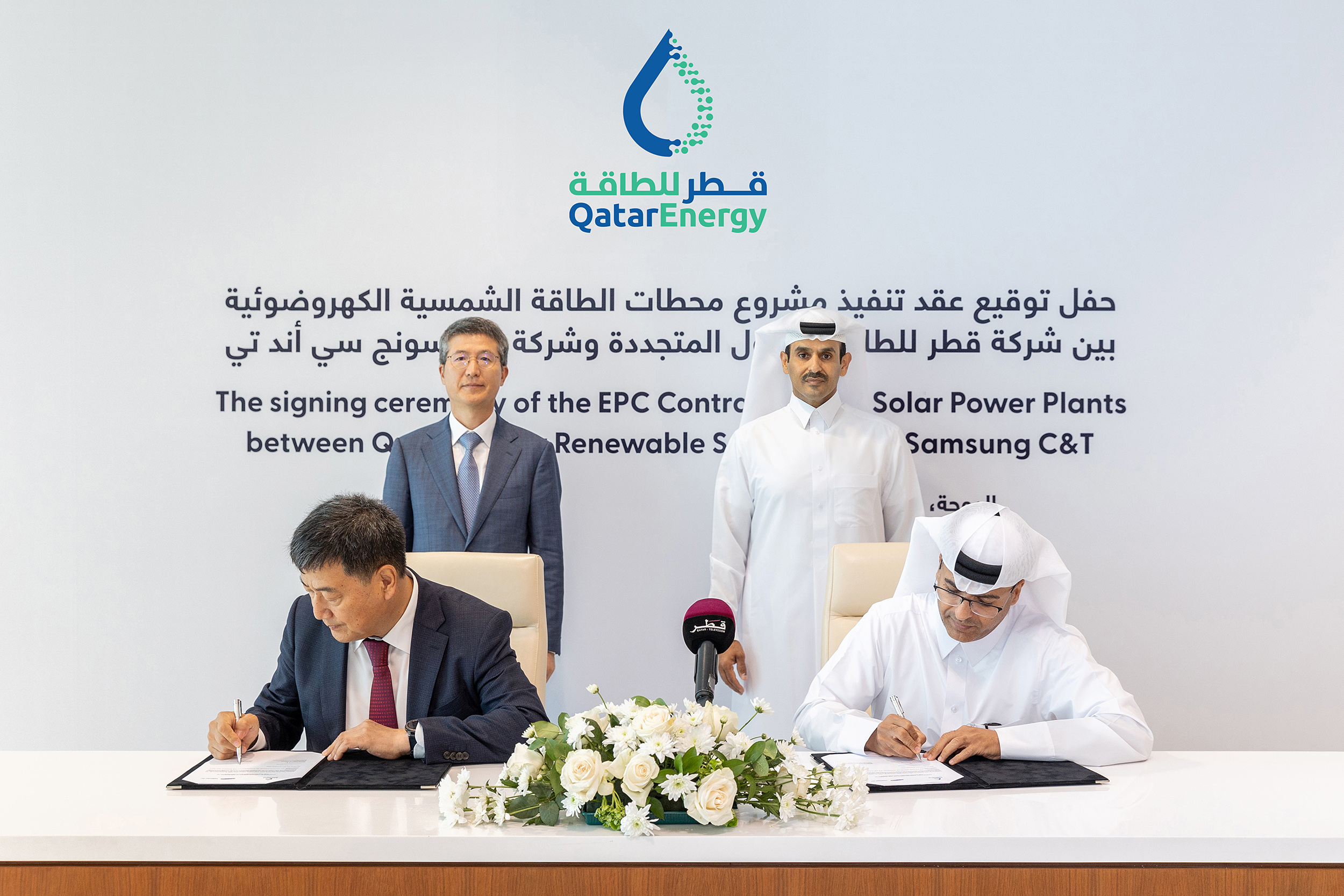The project will increase Qatar’s renewable energy generation capacity to 1.675 GW by 2024.
QatarEnergy Renewables awarded Samsung C&T on Tuesday the contract to build its QAR 2.3 billion solar power project, set to kickstart electricity production by the end of 2024.
The signing of the Engineering, Procurement and Construction (EPC) contract was held in Doha and was attended by President and CEO of QatarEnergy Saad Al-Kaabi as well as President and CEO of Samsung C&T Sechul Oh.
The South Korea-based company was awarded the contract for the industrial cities solar power project (IC Solar), entailing the construction of two solar power plants in Mesaieed Industrial City (MIC) and Ras LaffanIndustrial City (RLIC).
The MIC will have a 417 MW plant and RLIC will have a 458 MW plant, covering a combined area of 10 square kilometres.
“This IC Solar project is a major step in the implementation of our strategy to diversify Qatar’s energy resources and to increase the reliance on high-efficiency renewable energy, which is a cornerstone for a sustainable future,” said Al-Kaabi.
The power plants, expected to generate 875 MW of electricity, come under QatarEnergy’s efforts in investing in renewable energy and sustainability projects both domestically and globally.
Al-Kaabi noted that the project also comes under its target of 5 GW of solar generated power by 2035.
“It also gives me great pleasure that this landmark project marks the first investment for our newly formed, wholly owned subsidiary, QatarEnergy Renewable Solutions, which will invest in and hold all our renewables and other sustainable initiatives going forward,” added Al-Kaabi.
IC solar is the second project of its kind in Qatar, after the 800 MWp Al Kharsaa project, the world’s third-largest solar power plant.
According to QatarEnergy, the first project is currently under construction and the second will increase Qatar’s renewable energy generation capacity to 1.675 GW by 2024.
The latest solar power plants use the latest technologies including bifacial modules and cleaning robots to ensure efficient electricity generation while reducing emissions of more than 28 million tonnes of CO2.
The project will reduce the energy giant’s greenhouse gas footprints in its other key projects, including the North Field East and North Field South liquified natural gas (LNG) expansion projects.
The LNG project is the biggest of its kind and is set to boost Qatar’s annual production capacity from 77 million metric tonnes to 126 million tonnes by the year 2027. The project is expected to generate revenue of $40 billion upon the completion of the first part by 2025.
The Qatari company has been increasing its efforts to address climate change.
In March, it updated its Sustainability Strategy, which includes initiatives aimed at reducing greenhouse gas emissions through the use of carbon capture and storage (CCS) technology.
The technology is able to capture more than 11 million tons per annum of CO2 in Qatar by 2035.
Qatar itself introduced plans last year to reduce 25% of its greenhouse gas emissions by 2030 as part of its “Climate Change Action Plan”. The initiative also also falls in line with the Qatar National Vision 2030’s environment objectives.
Without any action taken, the emissions would increase by 33%.







